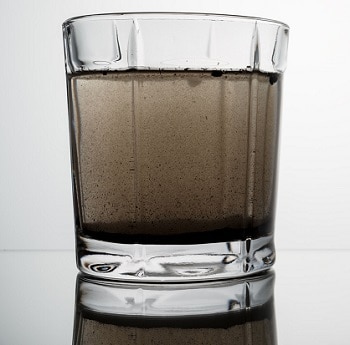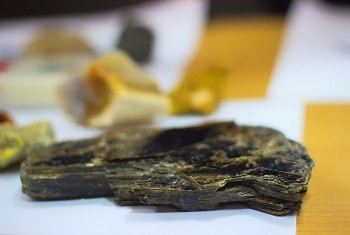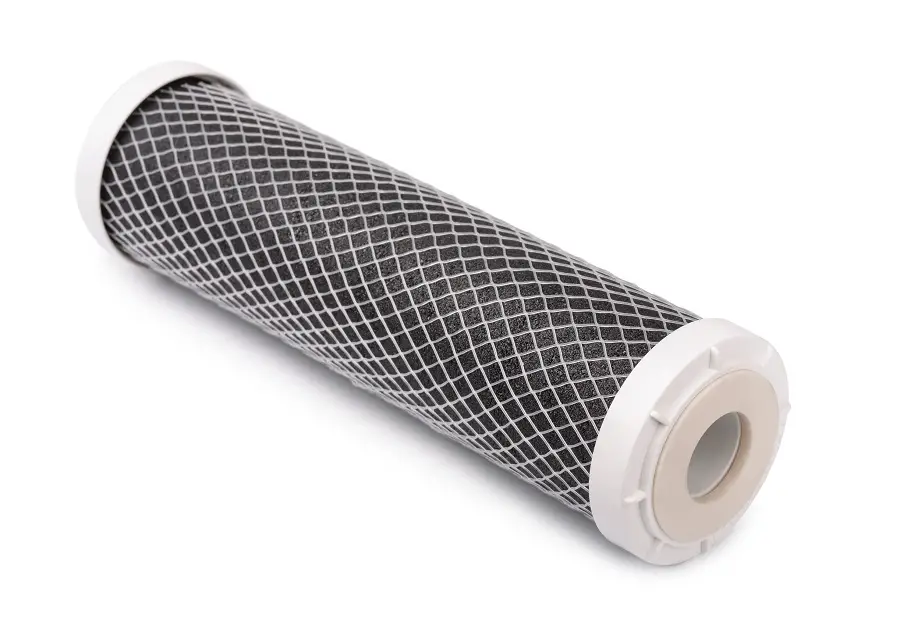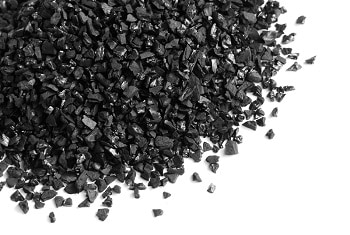You are rinsing off a few dishes in the sink and notice a little black speck that came out of your faucet, then another, and another. What the heck are they, are they harmful, is there some major problem going on with your plumbing? Probably not, it’s most likely one of these very common reasons.
What Are The Black Specks In My Water? Black specs in your home’s water are likely particles of corroded pipes, a corroded water heater, disintegrated rubber washers or seals, sand or silt, granular carbon, or sulfur bacteria.
For the most part, black specs in your home’s water are simply particles of natural sediment or particles of surfaces that the water has made contact with. They are not usually harmful if consumed and pose no serious problems to the plumbing of your home.

You may have corroded pipes or rust particles.
Most homes have plumbing that is composed primarily of copper piping and fittings. But some older homes may have plumbing that contains iron pipes or iron connections.
Although iron pipes work well for plumbing purposes, they can corrode over time and this corrosion can flake off as small black specks.
Acidic water, or water that has been treated by a corrosive substance like chlorine, can eat away at the iron plumbing causing it to disintegrate into small particles.
Also, plumbing, water fixtures or water tanks can rust due to aggressive water. This will create small bits of rusted metal which will fall off the metal surfaces and be carried out your water faucets and showerheads.
Your water heater tank or anode rod may be deteriorating.
Inside of a water heater storage tank is a rod that is referred to as a self-sacrificing anode rod. This rods purpose is to corrode so that the tank itself does not.
As this rod decays, it will flake off small pieces of itself that are often black in color. So if you are only seeing black specks coming out when you are using hot water, this may be the cause of it.
Have a plumber flush out your hot water tank and check the anode rod to see if it needs to be replaced.
In some cases, the anode rod may have already deteriorated and the water has started to corrode the hot water tank. Replacement of the anode rod may stop the corrosion, but ask your plumber if the whole tank should be replaced.
Disintegrating Washers or Rubber seals.
When the rubber gets old and loses its elasticity, it can become brittle and break apart. This is also common on municipal water supplies when chlorine or other corrosive chemicals are used to disinfect the water.
Even rubber that is exposed to sunlight can deteriorate from the harmful UV rays of the sun.
When a rubber washer or seal begins to deteriorate due to age or being exposed to chemicals or sunlight, it will flake off small particles, and since the rubber tends to be black for these washers and seals, we see these particles as black specks in our water.
Hardness build-up.
If you have hard water but have been without a water softener or a properly working water softener, you could have hardness from your water that has built-up on the walls of the plumbing of your home.
If you now have a properly working water softener, your new soft water will help to remove this hardness build-up in your plumbing. See my article on “Will A Water Softener Remove Buildup In Pipes?”.
As the soft water runs through your plumbing, it can loosen up the hardness from the walls of your pipes and it will come out of your faucets.
Because the hardness may have been there for quite some time, it can sometimes look black.
They may be sand or minerals from your well.
Even though your water may appear clear most of the time, there may be times where your well may produce a bit of sand or other minerals that have gotten stirred up from the bottom of your well.
Heavy rains, droughts, and even heavy melting snow run-off can introduce sediment and other contaminants to your water. These changes in your water will often go away when the water in your well settles to where it was before.
Installing an in-line sediment filter will capture the sediment to prevent it from continuing into your home.
Mica:

Mica is a group of silicate minerals that develop in many layers of thin sheets. These sheets can separate from each other and look like small particles in water that seem soft and pliable because of their thin and flexible form.
Although Mica can be in many colors and shades, the lighter colored form of mica is often not noticed, but some mica can be dark black in color, making it very easy to see with the naked eye.
Due to their unique form, they are also known as “sheet silicates”. These individual sheets of mica are very lightweight and fine, because of this they can often find their way through most common sediment filters.
If you find small black specks in your water that feel smooth and mushy but do not appear to smear, this may be mica. Installing an in-line sediment filter and using a dual-gradient particle filter should be able to remove the mica. Source
You may have a cracked carbon filter.

Granular Activated Carbon (GAC) water filters contain carbon granules that are held in a chamber within the filter that is supposed to only allow water to pass through it. If the filter develops a tear in it from age or overuse, the carbon can escape.
Also if your water is supplied by a municipal water supplier, your water is most likely treated with chlorine to disinfect it. Chlorine can cause the plastic filter to become brittle and crack.
These carbon grains are black in color and lightweight and therefore can easily be carried into your home and out of your plumbing fixtures.
Broken down carbon from a carbon filter.

If your water is treated with chlorine to disinfect it, your water contains sulfur, or you have an iron removal system, you probably have a carbon water filtration tank. This tank often looks just like a water softener tank but does not have a salt tank connected to it.
The carbon that is in this tank looks a little like corn flakes breakfast cereal. This carbon contains pores that collect chemicals like chlorine and also removes iron and odor-causing contaminants, but they don’t last forever.
The carbon gets cleaned periodically so that it can continue to remove contaminants from the water traveling over it. Over time, the carbon gets worn and can break-down into smaller pieces that can get drawn into the home.
Although these flakes are not harmful, they are not exactly pretty to see in your water when you go to quench your thirst.
Replacing the carbon in your tank with fresh carbon should eliminate this problem and make sure that the carbon is removing what it should.
Sulfur bacteria.
Sulfur bacteria can live on the walls of your homes plumbing and even in your hot water heater. Often sulfur bacteria is in such a small amount that we never even know that it is there.
This is, until the sulfur bacteria dies, falls off the walls of your plumbing, and comes out of your sink faucet as little black specks.
Sulfur bacteria alive or dead is not considered to be harmful to humans, it just looks less than thirst-quenching.
Usually, running the water for a minute or so will clear the bacteria, and having your plumbing sanitized will help remove any leftover sulfur bacteria.
If you have sulfur bacteria in your water and are concerned that you may have other organisms lurking in your homes plumbing, you may want to consider installing a reverse osmosis drinking water system with UV protection to ensure that you and your family have healthy, bacteria-free drinking water.


The black specks coming out of my bath tub faucet may not be toxic, but what is the oily residue and is it toxic?
Hello Dorcas and thank you for the question.
It is possible that the black specks are sulfur bacteria from inside of your plumbing, but without testing your water, I would not be able to suggest what the oily residue might be.
I would recommend that you contact a local water testing laboratory and ask them for help.
I hope this was helpful.
Paul